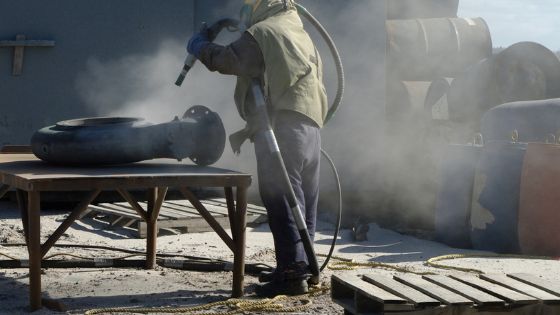Cleaning your industrial equipment and different surfaces can be tiring, and there may be times when you need something stronger. Dirty surfaces have not only dust but also harmful contaminants and other residues, which can negatively impact your health.
Cleaning contaminants like paints and dirt cost-effectively is easy with dry ice blasting, also called sandblasting, and is a cleaning method used commercially and industrially. It has applications in hospitality, manufacturing, automotive, food and beverage, and aviation. It can speed up the regular cleaning process and also provide good results. Here are five incredible applications of this particular cleaning process.

1. Mold Cleaning
When it comes to injection molding, cleansing the surfaces and small crevices can be tricky. Molding manufactures precision equipment and requires proper cleaning so that the products being molded are as requested. The process also uses different plastic materials that may or may not harm health.
The blasting technique offers a safe way of cleaning up without damaging the molds. It is hugely time-saving because you don’t have to disassemble them for cleaning. It increases productivity and saves essential time which can be used in production.
2. Equipment Cleaning
Equipment cleaning is a process that needs to be thorough to remove all the dirt and contaminants. The equipment to be cleaned include forklifts, hydraulics, robotics, conveyor belts, production and HVAC equipment, and motors and engines. The compressed dry particles allow for in-depth cleansing without negatively impacting the integrity of the equipment.
With continuous use, equipment tends to have hard-to-remove stains that cannot be scrapped or washed away. The surface is often fragile and needs to be taken care of to function optimally. If you begin cleaning the usual way, it can take longer, whereas blasting is a more efficient process. It is a non-abrasive process, so the surfaces will remain as they were before, with only the stains gone.
3. Surface Preparation
While manufacturing different products, surface prep is crucial for precision production. Scrubbing with bristled brushes or using pressure washing will not work on delicate surfaces. It is imperative to use a non-abrasive cleaning method so that the surface prep does not cause damage to the equipment.
With continuous use, surfaces can have build-ups, leading to contamination in products yet to be manufactured. Surface preparation is usually used before it is painted or coated with another material. It is therefore essential that no residue can impact the coating process.
4. Removing Adhesives
High-pressure washing is usually used for a thorough cleansing, including adhesive removal. However, high pressure is unsuitable for all services and can cause more damage than expected. Dry ice causes the adhesive to freeze wrapped and loosen its tight hold.
After freezing, the high-speed pellets allow for the breaking up of the adhesive coating and its automatic removal in a safe manner. Dry ice blasting can remove the adhesive and clean the assembly for future use within seconds.
5. Remediation
Cleaning is not only used in manufacturing industries or for commercial purposes. It also serves a restoration purpose in old buildings or delicate artifacts. Older artifacts usually have oxidized layers with contaminants, dirt, lead, mold, and paint. Cleansing solvents may help dissolve these particles but also cause damage due to toxic chemicals. Cleaning by hand is also restrictive, which is why dry ice is used to reach smaller parts.
Conclusion
The blasting technique uses dry ice to break the bonds of contaminants and remove them from the equipment or product to be cleaned. It is an efficient process for protecting the outer surface of equipment, artifacts, and molds. This technique is used across different industries because of its non-aggressive nature.
